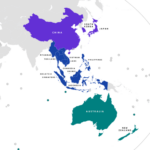What we said when the PM came to visit
– Sarah Ramsay, Chief Executive Officer, United Machinists The Prime Minister was so disappointed she couldn’t make United’s Hawaiian launch party, she dropped in for a visit a couple of weeks later with her own party of some 30 media, entourage and diplomatic police. We can confirm it isn’t an act – Jacinda Ardern in person is the real-deal, a people person that puts you at ease immediately and is genuinely interested. Thoughtful, curious and obviously read up before her visit, she was eager to discuss the operations of our workshop and our views on the contract manufacturing industry: How difficult is it to find skilled staff? What can be done to help push apprenticeships? What can schools be doing to draw attention to careers in engineering? Why is it important for NZ to retain manufacturing? What can the government do to help push this? We told her our vision was to bring sexy back into manufacturing – she had a good laugh at that. We told her that now is the time for a renaissance of hi-tech manufacturing in New Zealand. The time to redefine what manufacturing looks like. That it’s not a dirty old mill or lathe, with ‘you’ll get it when its good and ready’ service. It’s the ‘Machine Shop of the Future’ – a state of the art, temperature-controlled facility making highly intricate parts for industries such as medical, cinematography, marine and aerospace. Utilising the very latest in CNC, robotic and software technology available. But that investments into machine capacity will come to nought, if we don’t have the highly skilled people to run them. Of the seven qualified CNC machinists we have hired in the past 18 months, six have been from overseas. “Go hard & Go Early” – a motto often used by Prime […]










